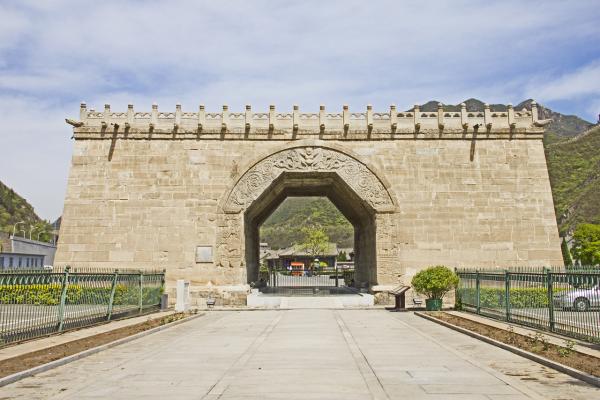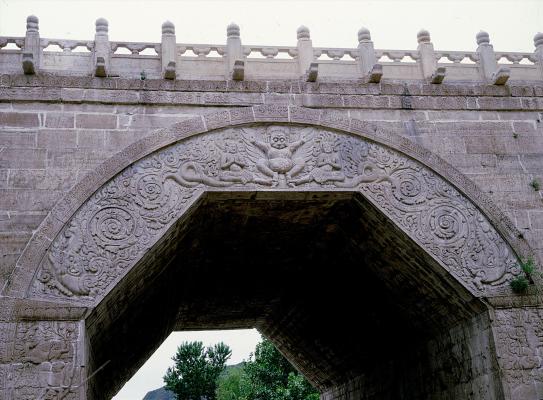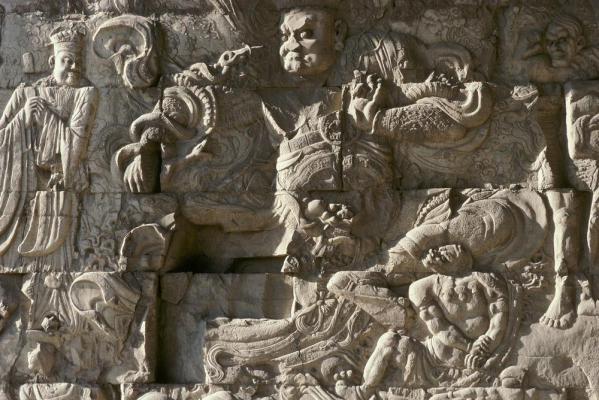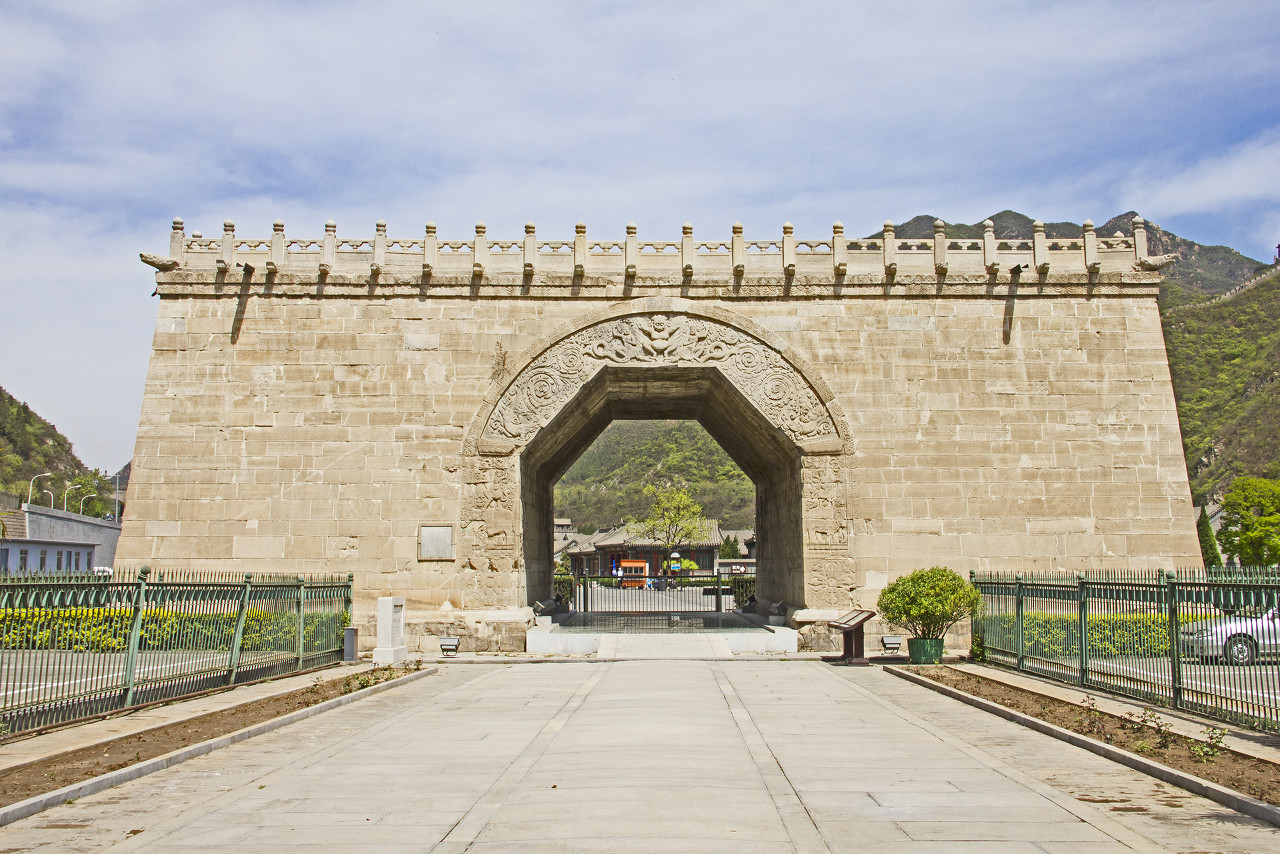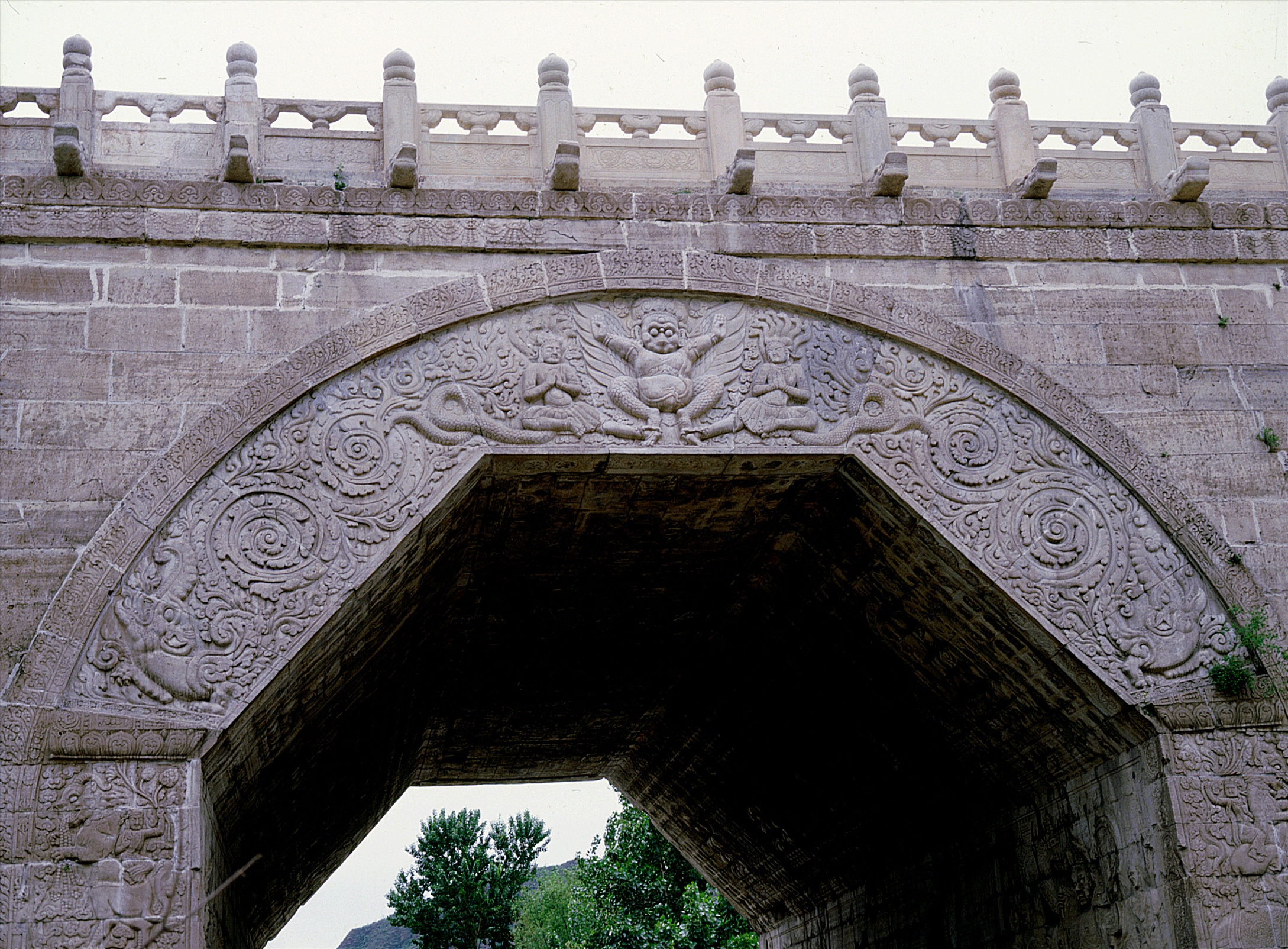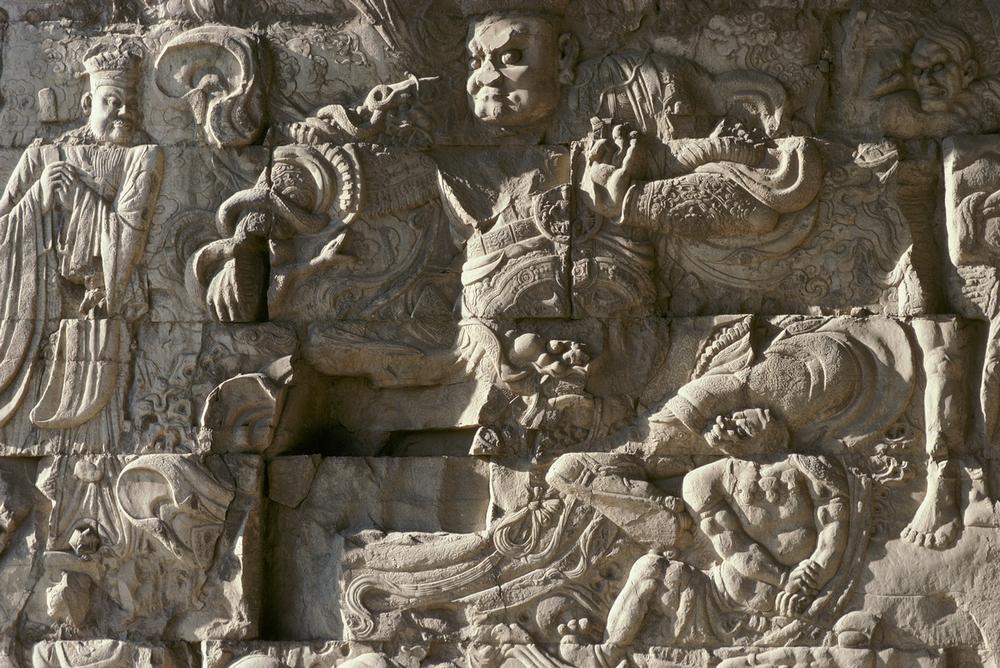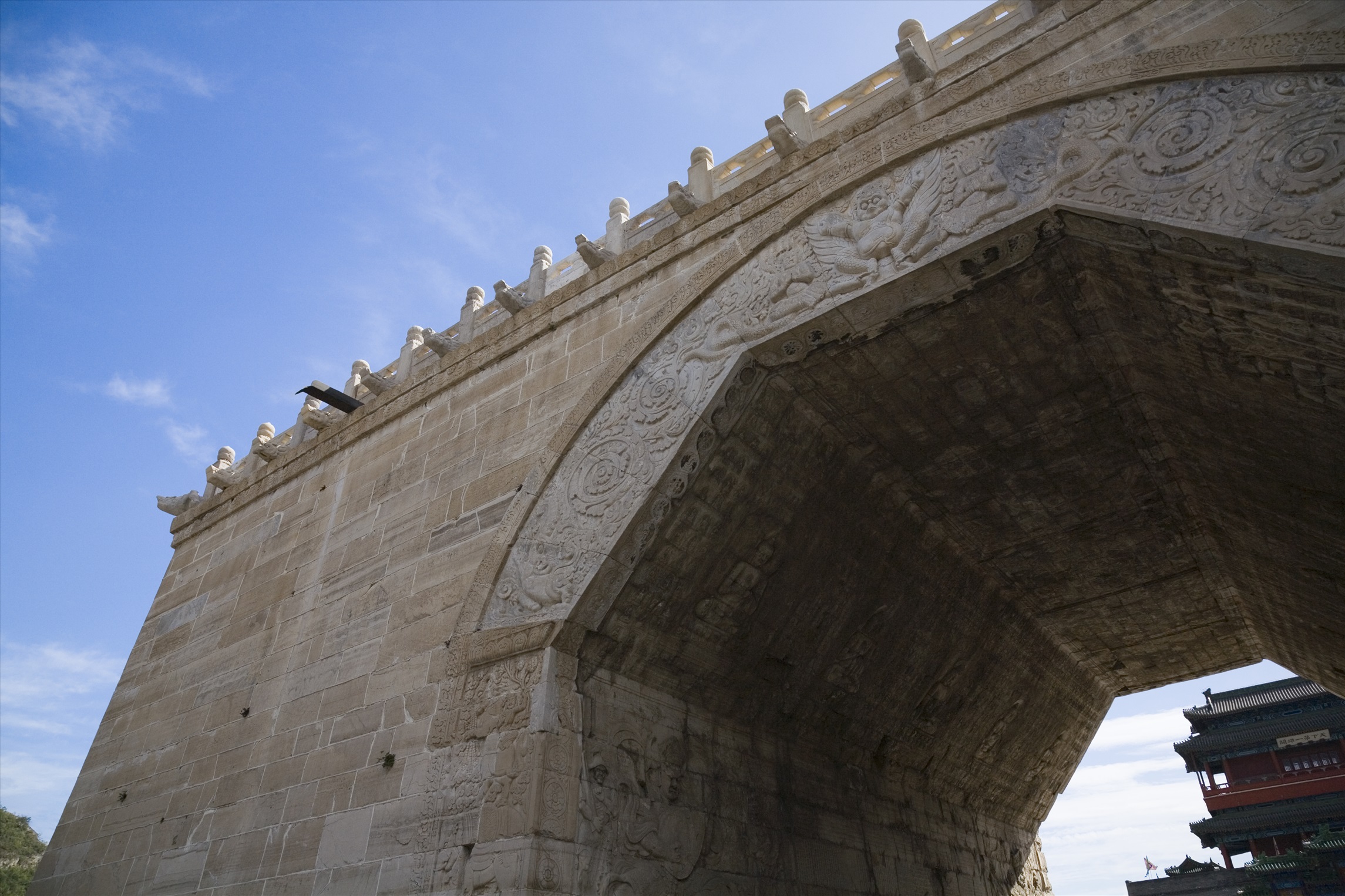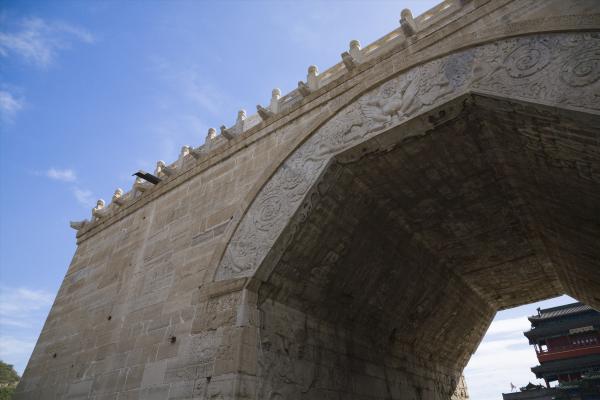Guancheng Yuntai of Junyongguan Pass(居庸关关城云台)
Guancheng Yuntai of Juyongguan Pass used to be an arcade at the center of Juyongguan Guangcheng.
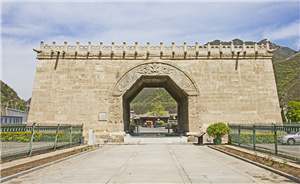
-
Tel:
+86 10 69771665 -
Best Time to Visit:
May to October -
Duration:
30 Minutes -
Admission:
40 RMB (peak season) 35 RMB (off season) 40 RMB (peak season) 35 RMB (off season) -
Opening Hours:
9:00 -17:00
Description
Guancheng Yuntai of Junyongguan Pass(居庸关关城云台)
Guancheng Yuntai of Juyongguan Pass used to be an arcade at the center of Juyongguan Guangcheng. It is located on the north of the south city tower of Juyongguan. Since it is so majestic and seems to stand on top of clouds when seen in the distance, it was called Yuntai Stone Tower in the Ming Dynasty. Yuntai is a white-stone structured building with typical Tibetan Buddhist features.
It was built in 1342 under the leadership of the then prime minister Alutu as ordered by the Emperor Sh...
Guancheng Yuntai of Junyongguan Pass(居庸关关城云台)
Guancheng Yuntai of Juyongguan Pass used to be an arcade at the center of Juyongguan Guangcheng. It is located on the north of the south city tower of Juyongguan. Since it is so majestic and seems to stand on top of clouds when seen in the distance, it was called Yuntai Stone Tower in the Ming Dynasty. Yuntai is a white-stone structured building with typical Tibetan Buddhist features.
It was built in 1342 under the leadership of the then prime minister Alutu as ordered by the Emperor Shun in the Yuan Dynasty. It is a rare cultural treasure passed on from the Yuan Dynasty. With elaborate carving technique, unique style and exquisite patterns, it is a stone carving masterpiece and also an architectural art representative of the Yuan Dynasty. Yuntai was designated among the first batch of key cultural relics under state protection by the State Council in 1961 due to its extremely high research and appreciation values in history, religion, architecture, engraving and characters.
The platform is about 16.84 meters long, 17.57 meters broad and 9.5 meters high. The pillars, the breast board, and the drainage dragon heads are all of the Yuan dynasty styles. There is a door opening at the stylobate for passengers, rickshaws and horses to pass.
Yuntai is a type of architecture in Tibetan Buddhism. Its function was to spread influence of Buddhism and praise the merits of the royal family for building the tower. When completed, Yuntai has three Tibetan Buddhist stone towers at the top, stone balustrades and stone craving decorative patterns in the middle, and a stone platform with a gate at the bottom, which was called “street crossing tower” back then. At the end of the Yuan Dynasty, the three stone towers were seriously damaged. Then the Han people built a Buddhist temple on the existing stone platform for enshrining Buddha. Therefore, the Buddhist temple was called “Temple on Platform” and the stone platform was renamed “White Cloud Platform”. In 1702, the Buddhist temple caught fire and only the Cloud Platform (Yuntai) was left. The name “Yuntai” of the tower base is in use today. The floor inside the cave of the Cloud Platform was constructed with 120 huge stones.
In Chinese history, people, horses and vehicles that were to pass the Juyongguan pass had to get through the cave of the Cloud Platform and receive baptism of Buddhism. The huge stones here have been worn to be round and smooth. The four lines of clear carriageway prints were left by the busy traffic at that time. The driveway grooves are 1.25m away from each other, 0.14m wide and about 0.35m deep. Juyongguan, though a military pass, more importantly served as a bridge and bond between Han people and ethnic minorities in the history.
There are elaborate embossments inside the cave of the Cloud Platform, and also Mandala, Buddha in ten directions and Four Heavenly Kings. Mandala in Buddhism means “sacred circle” or “sacred pulpit”. On the top of the cave, there are 5 Mandala patterns standing for supremacy of Buddha, all carved with the holy portraits of Buddha and Bodhisattvas. On a skew wall are carved ten sitting portraits of Buddha in ten directions, including Buddha Bhadrashri, Buddha Candrashri, Buddha Anantaujas, Buddha Ketushri, Buddha Ashokashri, Buddha Ratnadatta, Buddha Kusumashri, Buddha Yanatrayacarya, Buddha Prabhasashri and Buddha Vipulaganashri. They all look amiable, sitting on Lotus Agora and wearing cassocks. Each giant Buddha is surrounded by 102 small Buddha figures as well as Bodhisattvas carved on the wall. There are totally 1,060 Buddha portraits carved inside the cave. In the four corners of the cave are carved the sitting portraits of the Four Heavenly Kings, each of whom are 3m tall and 4m wide. They are Dhṛtarāṣṭra of the east who upholds the realm, Virūdhaka of the south who causes to grow, Virūpākṣa of the west who sees all, and Vaiśravaṇa of the north who hears everything. On both sides of the kings, there are two celestial soldiers. All embossments of the heavenly kings are vivid, exquisite and stereoscopic.
Beside the portraits of the Four Heavenly Kings is Dharani Sutra inscribed in six languages including Sanskrit, Tibetan, Phagspa, Uyghur, Tangut and Chinese as well as Records on the Merits of Building the Tower in the other five languages except Sanskrit. The inscription in Tangut is especially precious due to its rarity. There are embossments engraved in 6 ancient characters inside the cave of Yuntai, which is the first case discovered in China, so Yuntaiis a national treasure for the country.
Yuntai is trapezoid in shape with a narrow top and a wide bottom. It is constructed with large white marbles. Under the platform is a hexagonal gate, in which the depth of the inner space is 15.8m long. Above the gate are two layers of stone plates. The top layer is carved with clouds and dragons and the bottom layer with beast appearances and decorative bead patterns. Around the flat plates are erected white marble breast boards and 56 balusters. Below the balusters are dragon heads splitting water, with the biggest dragon heads in the four corners. The gate surface is carved with “Liunaju” embossments. Liunaju refers to six holy decorative patterns in Tibetan Buddhism, including Garuda Dhwaja, Huayun Whale, Huayun Dragon, Huayun Boy, Huayun Beast King and Huayun Elephant King. All patterns symbolize happiness and good luck in Buddhism.
